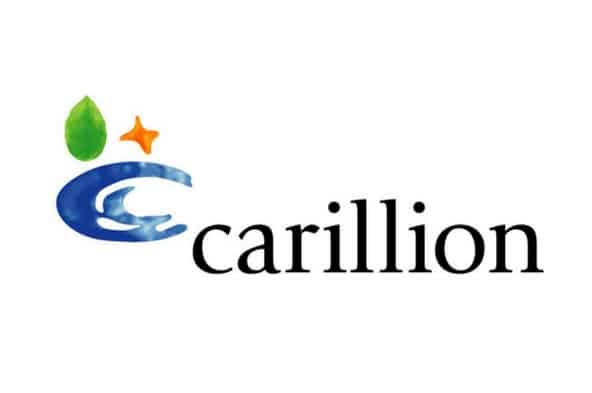Company Voluntary Arrangement (CVA)
If your business is insolvent but may still be financially viable, a company voluntary arrangement (CVA) may be the best option for helping you negotiate with creditors and get back on track.
Proposing a CVA can protect your business against legal pressure by creditors. If successful, a CVA can allow you to renegotiate the terms of your debts in a way that works for your creditors and your business.
If your business is financially distressed and you’re considering a CVA, contact us. Our team of qualified, experienced insolvency practitioners can explain your options and help you make the best decision for your business.
Below, we’ve explained how a CVA works, as well as the factors that your business will need in order to enter into a CVA with its creditors. We’ve also listed the advantages and disadvantages of a CVA, as well as other insolvency procedures that may be suitable for your business.
What is a Company Voluntary Arrangement (CVA)?
A company voluntary arrangement, commonly referred to as a CVA, is an agreement between your company and its creditors. It allows your insolvent company to repay part of its debts on a long-term basis, typically in the form of a monthly payment.
If your company is insolvent but viable, entering into a CVA allows you to centralise your debts into a single monthly payment. This can improve cash flow and allow your business to continue trading while paying off its debts.
For the right business, a CVA can be a good option. However, not all companies are eligible to enter into a CVA. For example, if your business is no longer viable, your creditors may reject a CVA proposal and an option such as administration or liquidation may be more effective.
Can Your Company Propose a CVA?
A CVA is an agreement between your business and its creditors, meaning both parties will need to accept the terms in order for it to take effect. To propose and enter into a CVA, your business needs to:
- Be either cash flow or balance sheet insolvent. Only an insolvent company can enter into a CVA with its creditors. Your business can be cash-flow insolvent (unable to pay its debts as they’re due) or balance sheet insolvent (liabilities greater than assets).
- Be profitable, or have a history of profitable trading. While there’s no need for your business to be profitable at the time you propose the CVA, you must have a history of profitable trading, a viable business model and the potential to turn a profit again.
- Have a clear plan for business recovery. To win the approval of creditors, you’ll need to have a clear, realistic plan for turning around your business and producing a financial recovery.
Not sure if your business meets the requirements above? Contact us and talk privately with our insolvency experts, who can provide more information on the best options for your business.
Advantages of Entering Into a CVA
Company voluntary arrangements offer a range of benefits for businesses that are insolvent but viable. Key advantages of a CVA include:
- Temporarily ends legal pressure from creditors and HMRC. If the CVA proposal is successful, you’ll also be protected against legal action from creditors or HMRC while the agreement is in place and active.
- Stops winding up petitions and other legal action from creditors. If your business has already been served a winding-up petition, entering into a CVA within seven days will halt the winding up petition and prevent your company from liquidation.
- Allows you to stay in control of your business. Unlike administration, entering into a CVA allows you, as a company director, to stay in control of your business.
- Centralises and simplifies business debts. Under a CVA, multiple debts are paid via one monthly payment, simplifying the process of paying your business’s creditors.
- Improves your business’s cash flow. With a single, typically lower monthly payment, your business will benefit from enhanced cash flow that allows you to get back on track financially.
- May involve reducing some amount of debt. It’s common for some debt to be written off under a CVA. Depending on the state of your business, you may be required to pay creditors 20 to 100 percent of the total amount they are owed.
- Isn’t published in the London Gazette. There’s no legal requirement for a CVA to be advertised in the London Gazette. This can help you avoid the unwanted publicity and strain on business relationships that can occur with administration.
Disadvantages of Entering Into a CVA
Depending on your business’s financial state and viability, a CVA may be a suitable option for facilitating a recovery. However, a CVA isn’t always the best choice. Key disadvantages of a CVA include:
- Not all CVA proposals are accepted by creditors. At least 75 percent of creditors will need to accept your business’s CVA proposal. If your business has several creditors, it may not be able to convince all of them that a CVA is in their best interests.
- Entering into a CVA will likely affect your business’s credit rating. This may make it harder to access financing and grow your business in the future. However, this will likely occur with any type of insolvency procedure.
- Your business will still need to pay back most or all of its debts. Although some of your business’s debts may be written off under a CVA, your business may still need to spend a long period of time paying its creditors to comply with the agreement.
- If your business breaks the CVA agreement, it may still be pursued legally. If your business fails to make its monthly payments, your creditors could take action, including filing a winding up petition against your business.
How the CVA Process Works
Proposing and entering into a CVA is a multi-step process that requires the participation of your business and its directors, an insolvency practitioner, as well as any creditors and shareholders in your business. A typical CVA process may be as follows:
- Contacting an insolvency practitioner. If you believe that your business is insolvent, you need to contact an insolvency practitioner immediately. An insolvency practitioner will inform you of your options, which may include proposing a CVA.
- Drafting a CVA agreement. Your insolvency practitioner will draft a CVA proposal for your business’s creditors and shareholders.
- Directors review the CVA proposal. You and any other company directors will review the draft CVA agreement. At this point, you can propose revisions to the proposal or, if you feel the proposal isn’t realistic, look at other insolvency procedures.
- Filing the CVA proposal. Your insolvency practitioner will file the CVA proposal at the court. Copies of the proposal are provided to creditors and meetings are scheduled for creditors and shareholders.
- Meetings for creditors and shareholders are held. Your business’s creditors will meet to discuss the CVA proposal. At least 75 percent of the creditors (based on total value of unsecured debt) must vote in favour in order for the agreement to take effect.
During this meeting, your business’s creditors may propose and implement modifications to the CVA proposal. A separate meeting is held for shareholders, which also requires at least 50 percent support for the CVA agreement.
Following the meetings, your insolvency practitioner will provide a report of the meeting for creditors, shareholders and the court. - The CVA takes effect and your company is protected against legal action. Any and all legal actions by creditors against your business are halted, allowing you to trade with no pressure from creditors.
- Your business complies with the terms of the CVA. Your business will need to make regular monthly payments into a trust account for creditors in order to remain compliant with the agreement.
If you break the terms of the agreement by missing payments, legal stays may be lifted and your creditors may continue legal action against your business, including actions to wind up your business via compulsory liquidation.
The CVA process can take several months. Depending on the financial state of your business and its relationships with creditors, it may take two to three months to propose and enter into a company voluntary arrangement.
Talk to Our Insolvency Experts
If your business is insolvent but you believe that it’s financially viable, proposing a CVA to your creditors may be the best option for recovering your business.
Proposing a CVA will protect your business against legal action from creditors. If successful, a CVA will allow you to repay your debts in instalments, simplifying cash flow while you focus on turning your business around.
Our expert insolvency practitioners have helped hundreds of UK businesses in a diverse range of industries propose and enter into CVAs with their creditors. We can provide detailed, expert advice about the CVA process and its suitability for your business.
To discuss your business’s situation and learn more about what you can do, contact us now on 0161 8719 842 or send us an email to schedule your free private consultation.



